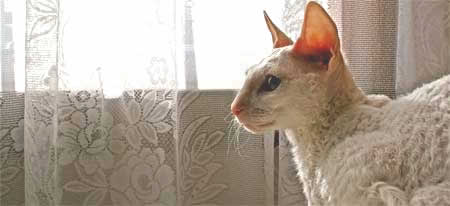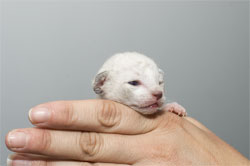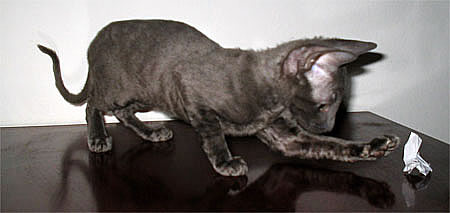|

House Cat: The coat of a Cornish Rex is extremely fine and soft to the touch; however, their light coat means that they can only live in indoor, warm and dry conditions. Consequently, these cats tend to hang around light bulbs, the tops of computer monitors, and other warm places. Cornish Rexes also have a mild cheesy smell peculiar to the breed; this odor comes from scent glands in the paws.


A Curious Cat: The Cornish Rex is an adventurous cat and very intelligent. It can readily adapt to new situations and will explore anywhere, jumping into refrigerators, examining washing machines, etc. Some humans consider its antics to be deliberately mischievous. The Rex is extremely curious, seeks out the company of people and is friendly toward other companion animals. It is a suitable pet for timid children.

 Mix and Match Cats: The Cornish Rex breed emerged from a genetic mutation that originated in a litter Mix and Match Cats: The Cornish Rex breed emerged from a genetic mutation that originated in a litter
of kittens born in the 1950s on a
farm in Cornwall, UK (hence their name). One of the kittens, a
cream-colored male named Kallibunker, had an extremely unusual, fine and curly coat; he was the first Cornish Rex. The owner
then bred Kallibunker back to his mother to produce other curly-coated kittens. Cornish Rexes were later brought to America and crossed with Siamese, giving them their long whippy tails and big ears.
Similar Breeds: The Devon Rex is a very similar breed. Crosses between Devon and Cornish Rexes are not permitted in pedigrees, and matings between them will not produce a cat with short wavy fur. Another hair-deficient breed is the Sphynx cat, which has no hair but may have a very light coat of fuzz.
They May Make You Sneeze: Contrary to popular belief, the Cornish Rex's short hair does not make it non- or hypo-allergenic. Most people who have cat allergies are allergic to cat dander and cat saliva. Since Cornish Rex cats groom as much as or even more than ordinary cats, a Cornish Rex cat will still produce a reaction in people who are allergic to cats; however, because of the fine, light fur that is shed from these cats, people with only mild allergies may experience fewer symptoms with a Rex.

Why Rex? Using the word "Rex" to imply short or otherwise unusual fur originates from an occasion when King Albert I of Belgium (1875-1934) entered some short-haired rabbits in a rabbit show. They did not meet the breed standard, but the show's officials did not wish to risk offending the king by rejecting them. Instead, they accepted them but wrote "Rex" (Latin for "king") beside their names.
All text is available under the terms
of the GNU Free Documentation License
|
